您当前的位置: 首页 > 学校概况

学校简介:
学校教员: 人,学生数量:人, 校友数量: 人,子机构数量:个, 相关机构: 个,受资助项目:项, 文章数: 篇,专利数:项,

A newly developed nanomaterial that mimics the behavior of proteins could be an effective tool for treating Alzheimer’s and other neurodegenerative diseases.The nanomaterial alters the interaction between two key proteins in brain cells—with apotentially powerful therapeutic effect.The innovative findings,recently published in the journal Advanced Materials,were made possible thanks to acollaboration between University of Wisconsin–Madison scientists and nanomaterial engineers at Northwestern University.The work centers around altering the interaction between two proteins that are believed to be involved in setting the stage for diseases like Alzheimer’s,Parkinson’s and amyotrophic lateral sclerosis,or ALS.The first protein is called Nrf2,a specific type of protein called atranscription factor that turns genes on and off within cells.One of Nrf2’s important functions is its antioxidant effect.While different neurodegenerative diseases result from separate disease processes,a commonality among them is the toxic effect of oxidative stress on neurons and other nerve cells.Nrf2 combats this toxic stress in brain cells,helping to stave off disease.Jeffrey Johnson,a professor in the UW–Madison School of Pharmacy,has been studying Nrf2 as apromising target for treating neurodegenerative diseases for decades alongside his wife Delinda Johnson,a senior scientist at the pharmacy school.In 2022,the Johnsons and another group of collaborators found that increasing Nrf2 activity in aspecific cell type in the brain,the astrocyte,helped protect neurons in mouse models of Alzheimer’s disease,leading to significantly less memory loss.While this previous research suggested that increasing Nrf2’s activity could form the basis of an Alzheimer’s treatment,scientists have found it challenging to effectively target the protein within the brain.“It’s hard to get drugs into the brain,but it’s also been very hard to find drugs that activate Nrf2 without alot of off-target effects,”says Jeffrey Johnson.Enter the new nanomaterial.Known as aprotein-like polymer,or PLP,the synthetic material is designed to bind to proteins as if it were itself aprotein.This nano-scale imitator is aproduct of ateam led by Nathan Gianneschi,a professor of chemistry at Northwestern and faculty member at the university’s International Institute for Nanotechnology. 查看详细>>
来源:威斯康辛大学麦迪逊分校 点击量: 0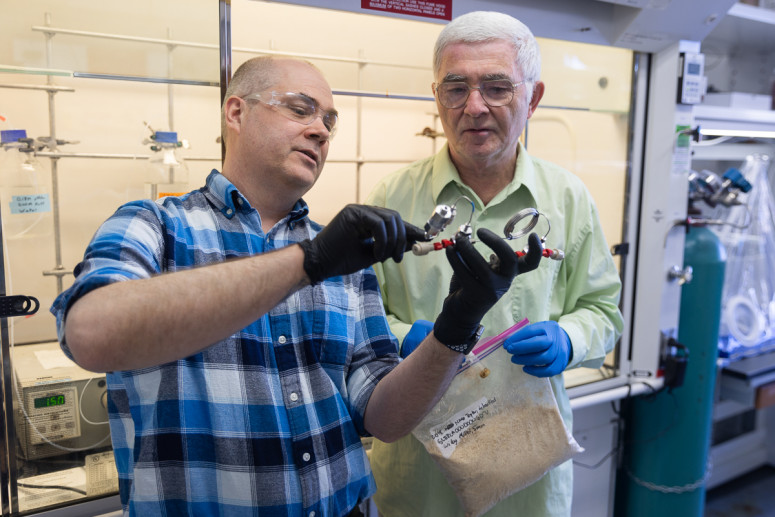
Scientists at the University of Wisconsin–Madison have developed acost-effective and environmentally sustainable way to make apopular pain reliever and other valuable products from plants instead of petroleum.Building on apreviously patented method for producing paracetamol–the active ingredient in Tylenol–the discovery promises agreener path to one of the world’s most widely used medicines and other chemicals.More importantly,it could provide new revenue streams to make cellulosic biofuels—derived from non-food plant fibers—cost competitive with fossil fuels,the primary driver of climate change.“We did the R&D to scale it and make it realizable,”says Steven Karlen,a staff scientist at the Great Lakes Bioenergy Research Center who led the research published recently in the journal ChemSusChem.Paracetamol,also known as acetaminophen,is one of the most widely used pharmaceuticals,with aglobal market value of about$130 million ayear.Since it was introduced in the early 1900s,the drug has traditionally been made from derivatives of coal tar or petroleum. 查看详细>>
来源:威斯康辛大学麦迪逊分校 点击量: 0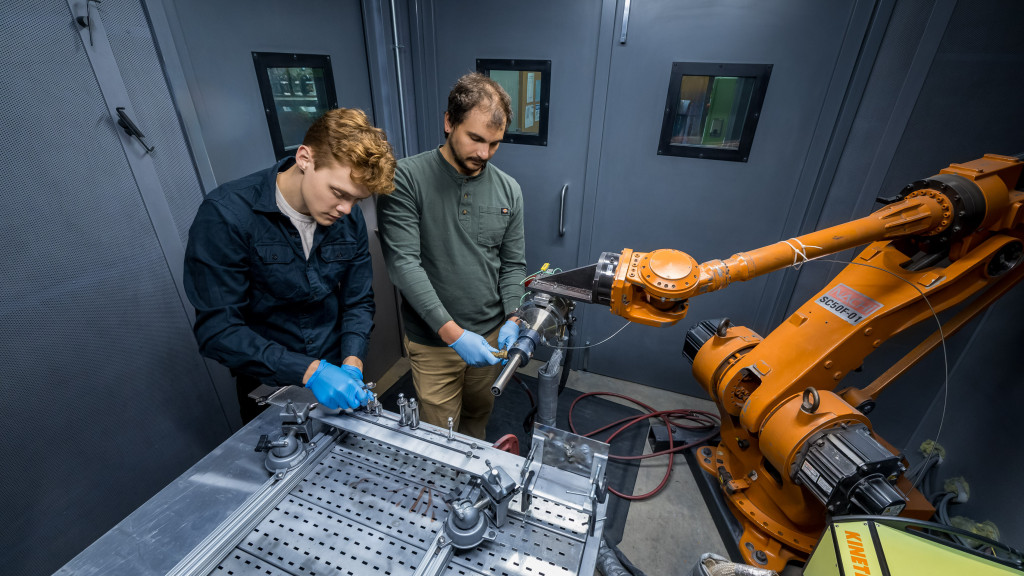
University of Wisconsin–Madison engineers have used aspray coating technology to produce anew workhorse material that can withstand the harsh conditions inside afusion reactor.The advance,detailed in apaper published recently in the journal Physica Scripta,could enable more efficient compact fusion reactors that are easier to repair and maintain.“The fusion community is urgently looking for new manufacturing approaches to economically produce large plasma-facing components in fusion reactors,”says Mykola Ialovega,a postdoctoral researcher in nuclear engineering and engineering physics at UW–Madison and lead author on the paper.“Our technology shows considerable improvements over current approaches.With this research,we are the first to demonstrate the benefits of using cold spray coating technology for fusion applications.”The researchers used acold spray process to deposit acoating of tantalum,a metal that can withstand high temperatures,on stainless steel.They tested their cold spray tantalum coating in the extreme conditions relevant to afusion reactor and found that it performed very well.Importantly,they discovered the material is exceptionally good at trapping hydrogen particles,which is beneficial for compact fusion devices.“We discovered that the cold spray tantalum coating absorbs much more hydrogen than bulk tantalum because of the unique microstructure of the coating,”says Kumar Sridharan,a professor of nuclear engineering and engineering physics and materials science and engineering.Over the last decade,Sridharan’s research group has introduced cold spray technology to the nuclear energy community by implementing it for multiple applications related to fission reactors.“The simplicity of the cold spray process makes it very practical for applications,”Sridharan says.In fusion devices,plasma—an ionized hydrogen gas—is heated to extremely high temperatures,and atomic nuclei in the plasma collide and fuse.That fusion process produces energy.However,some hydrogen ions may get neutralized and escape from the plasma.“These hydrogen neutral particles cause power losses in the plasma,which makes it very challenging to sustain ahot plasma and have an effective small fusion reactor,”says Ialovega,who works in the research group of Oliver Schmitz,a professor of nuclear engineering and engineering physics.That’s why the researchers set out to create anew surface for plasma-facing reactor walls that could trap hydrogen particles as they collide with the walls.Tantalum is inherently good at absorbing hydrogen—and the researchers suspected that creating atantalum coating using acold spray process would boost its hydrogen-trapping abilities even more.Creating acold sprayed coating is somewhat like using acan of spray paint.It consists of propelling particles of the coating material at supersonic velocities onto asurface.Upon impact,the particles flatten like pancakes and coat the entire surface,while preserving nanoscale boundaries between the coating particles.The researchers discovered that those tiny boundaries facilitate trapping of hydrogen particles. 查看详细>>
来源:威斯康辛大学麦迪逊分校 点击量: 1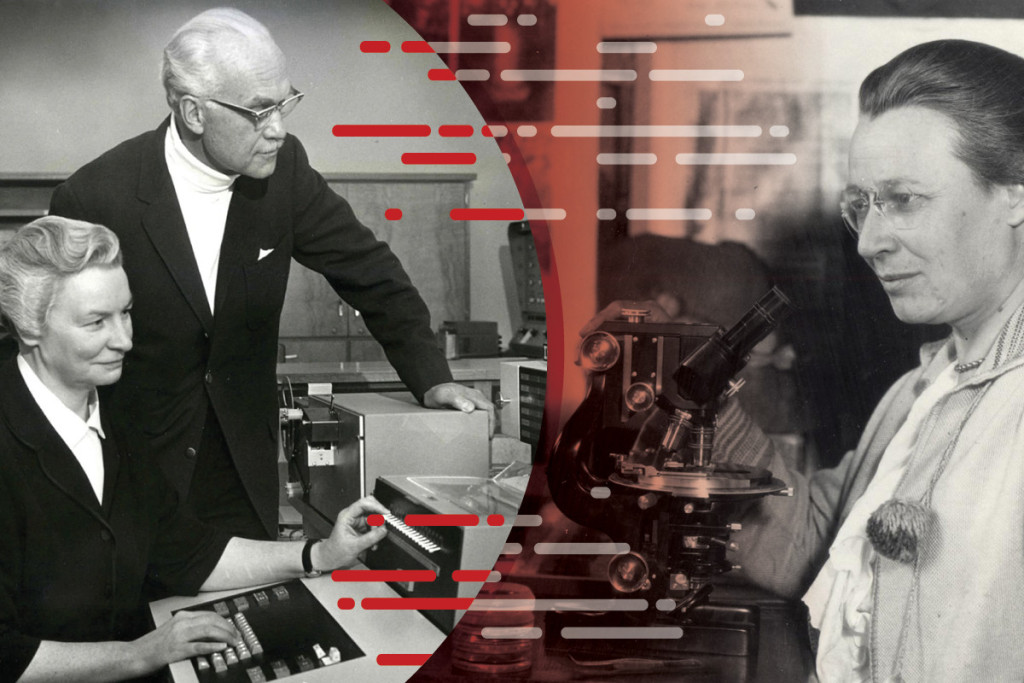
From medicine to ecology,engineering to computer science,the University of Wisconsin has for 175 years made valuable innovations that help people and communities across the state and beyond.And today,with one of the highest-ranked research programs in the country,the University of Wisconsin–Madison is well-known for making important scientific discoveries.But what about some of the lesser-known scientists,often overlooked in their time,who helped make the key discoveries that gave rise to this reputation?Science is ateam effort,even if that isn’t always reflected in the history books.While these scientists aren’t household names,the research they did and the training they received from UW–Madison helped advance their fields of science and improve the world.In recent years,University Archives,the Public History Project and others have worked to highlight some of these people and make up for lost time.Below are just afew of the scientists from UW–Madison who deserve to be recognized for the contributions they made to Wisconsin and the world.While most people may not have heard the name Miyoshi Ikawa,they probably have heard of warfarin,the medicine commonly used as ablood thinner.The story of warfarin,which was patented in 1947,began at UW–Madison in 1933,when afarmer sought the help of biochemistry professor Karl Paul Link.The farmer’s cows,who were eating sweet clover hay,began mysteriously dying from internal bleeding.The animals’blood wasn’t clotting,so Link and his research team decided to find out why.Once they discovered the chemical compound responsible for the cows’thin blood,the researchers worked in the lab to create new variations of the substance,each with slight modifications to its chemical structure.Their goal was to maintain the compound’s blood-thinning effect. 查看详细>>
来源:威斯康辛大学麦迪逊分校 点击量: 0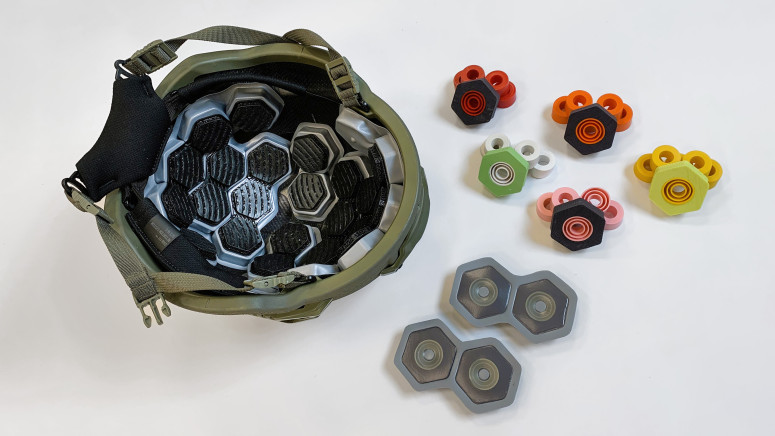
With new funding from the U.S.Office of Naval Research,an interdisciplinary initiative led by the University of Wisconsin–Madison will continue to grow its research on concussions and other traumatic brain injuries.Christian Franck,a professor of mechanical engineering at UW–Madison,started the initiative,called PANTHER,in 2017.Under his leadership,it has grown to include more than 30 principal investigators nationwide,bringing together scientists from academia,industry and government to study traumatic brain injuries through arange of approaches.The U.S.Office of Naval Research has awarded PANTHER new grants totaling$15 million,allowing the researchers to advance their groundbreaking work in developing better technologies for detecting and preventing traumatic brain injuries.The initiative’s researchers work closely with industry partners to rapidly translate fundamental scientific discoveries from the lab into next-generation consumer products that will protect the brain from injury.Franck says exciting developments are beginning to emerge from these industry partnerships.For example,helmet manufacturer Team Wendy has developed aprototype of amore protective helmet liner that’s informed by PANTHER research results.And industry partners Trek Bicycle and Milwaukee Tool each have new helmets in development that incorporate insights from PANTHER researchers.“These grants really allow us to deepen our collaboration with industry partners and will lead to even more advances that can enable safer helmets and protective gear not only for our military personnel but also for the public,”Franck says.“I’m very excited by the potential of this initiative to provide better solutions for preventing traumatic brain injury that everyone can access.”Part of the new funding will allow Team Wendy to establish an infrastructure to improve the ballistic performance of helmets for the military.Researchers will work with Team Wendy to develop better ballistic standards for helmets and create materials that provide enhanced protection against bullets.“I’m especially grateful for the efforts of U.S.Sen.Tammy Baldwin and U.S.Rep.Mark Pocan from Wisconsin and U.S.Rep.Marcy Kaptur from Ohio,who represents the congressional district where Team Wendy is based,in helping to secure this new funding for the PANTHER program,”Franck says.“Their continued support is instrumental in ensuring that this innovative program can make areal difference in improving people’s lives.”PANTHER is also expanding its research into anew area—investigating the potential for brain injury due to exposure to pulsed microwaves.This research will test whether directed energy exposure could have caused cases of“Havana Syndrome,”in which U.S.personnel serving both at home and abroad have experienced sudden onsets of concussion-like symptoms,such as severe headaches,dizziness and nausea.UW–Madison electrical and computer engineering faculty members Susan Hagness,Chu Ma and Daniel van der Weide have joined the initiative to lead research in this area.“We will be the first to take avery rigorous and methodological scientific approach to uncover any potential link between energy exposures at different levels and biological injury,”Franck says.“This research will reveal if there is ascientific basis for theories about the cause of Havana Syndrome.”Additional partners in PANTHER include researchers from Brown University,Robert Morris University,Colorado School of Mines,the University of Texas,Arlington,the University of Southern California,Iowa State University,UC Santa Barbara,Johns Hopkins University,Washington University in St.Louis,and Sandia National Laboratories. 查看详细>>
来源:威斯康辛大学麦迪逊分校 点击量: 0
Researchers at the University of Wisconsin–Madison and Academia Sinica of Taiwan have harnessed acombination of lab-grown cells to regenerate damaged heart muscle.The study,published in Circulation—which addresses major challenges of using heart muscle cells,called cardiomyocytes,grown from stem cells—takes acrucial step toward future clinical applications.Previous research has shown that transplanting cardiomyocytes made from induced pluripotent stem cells(iPSC)can replace muscle in the hearts of mammals.Researchers have struggled to bring the treatment to the clinic,in part because the implanted cells haven’t developed enough life-sustaining blood vessels to survive very long.The new study confronted that challenge by combining the lab-grown cardiomyocytes with stem-cell-derived endothelial cells—the cells that line blood.The combination therapy also holds promise for tackling arrhythmia,another significant obstacle in heart regeneration with stem-cell-derived cardiomyocytes.“Our findings suggest that human iPSC-derived endothelial cells can effectively augment the remuscularization of the heart by iPSC-derived cardiomyocytes,offering apromising avenue for future clinical applications,”says Patrick Hsieh,a researcher with Academia Sinica’s Institute of Biomedical Sciences who conducted the study while working as avisiting professor at the UW–Madison Stem Cell&Regenerative Medicine Center.Hsieh and study lead author Yu-Che Cheng collaborated with Tim Kamp,who serves as director of the Stem Cell&Regenerative Medicine Center,as well as ateam of researchers at UW–Madison and the Wisconsin National Primate Research Center,to examine the therapeutic effect of co-transplantation in mice and non-human primates undergoing aheart attack.“The main advantage of iPSCs is their ability to be differentiated into many types of cells and serve as avaluable resource for cell therapy,”says Cheng,who is aproject manager at Academia Sinica.“In this study,we generated billions of endothelial cells and cardiomyocytes from the same iPSCs line to inject into mice and non-human primates.”“The simple idea of the project was to enhance blood flow and promote survival of iPSC-cardiomyocytes using blood vessel-forming endothelial cells,”Kamp says.“But the reality of generating the optimal cell preparations followed by precise delivery to the heart reflects tremendous effort by an international team of collaborators.”The team would like to conduct further studies to refine their cell transplantation protocols and assess long-term safety and efficacy.Promising results,Hsieh believes,would lead to clinical trials with human patients with heart disease,a leading cause of death around the world.“As acardiac surgeon now focusing on translational research,the most exciting aspect of this research is the potential to make ameaningful impact on the treatment of heart disease,”Hsieh says.“Witnessing the significant improvements in cardiac function and tissue regeneration resulting from our combined cell therapy approach is both inspiring and promising for the future of cardiovascular medicine.”This research was supported by grants from the Ministry of Science and Technology,Taiwan(111-2321-B-001-012,111-2740-B-001-003,110-2320-B-001-023),National Health Research Institutes(EX111-10907SI),U.S.National Academy of Medicine and Academia Sinica(AS-HLGC-109-05),National Institutes of Health(U01HL134764 and UL1TR002373)and the National Science Foundation(EEC-1648035). 查看详细>>
来源:威斯康辛大学麦迪逊分校 点击量: 6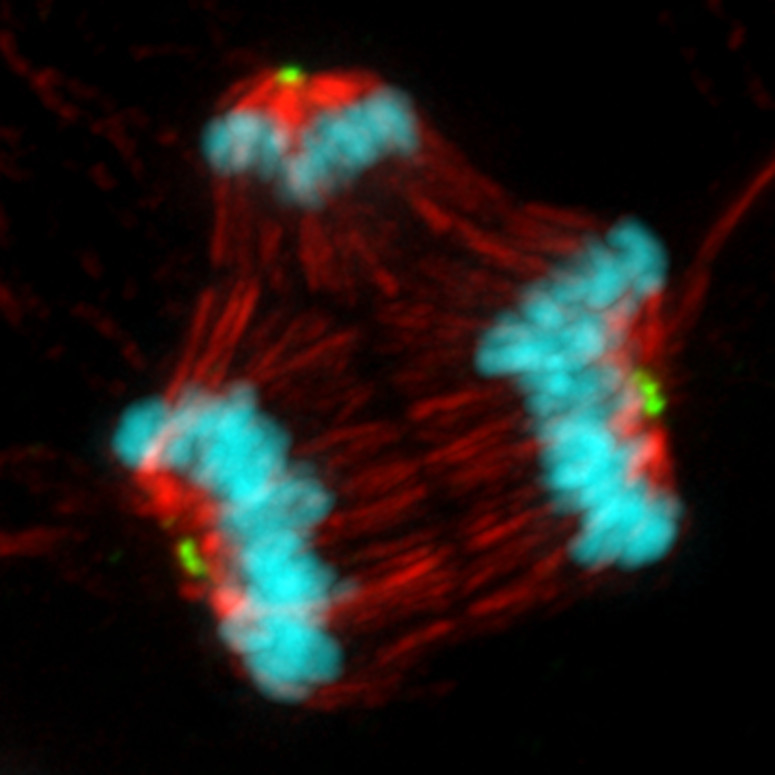
A new study from the University of Wisconsin–Madison suggests that chemotherapy may not be reaching its full potential,in part because researchers and doctors have long misunderstood how some of the most common cancer drugs actually ward off tumors.For decades,researchers have believed that aclass of drugs called microtubule poisons treat cancerous tumors by halting mitosis,or the division of cells.Now,a team of UW–Madison scientists has found that in patients,microtubule poisons don’t actually stop cancer cells from dividing.Instead,these drugs alter mitosis—sometimes enough to cause new cancer cells to die and the disease to regress.Cancers grow and spread because cancerous cells divide and multiply indefinitely,unlike normal cells which are limited in the number of times they can split into new cells.The assumption that microtubule poisons stop cancer cells from dividing is based on lab studies demonstrating just that.The new study was led by Beth Weaver,a professor in the departments of oncology and cell and regenerative biology,in collaboration with Mark Burkard in the departments of oncology and medicine.Published Oct.26 in the journal PLOS Biology and supported in part by the National Institutes of Health,the study broadens previous findings the group made about aspecific microtubule poison called paclitaxel.Sometimes prescribed under the brand name Taxol,paclitaxel is used to treat common malignancies including those originating in the ovaries and lungs.“This was sort of mind-blowing,”Weaver says about the previous research.“For decades,we all thought that the way paclitaxel works in patient tumors is by arresting them in mitosis.This is what Iwas taught as agraduate student.We all‘knew’this.In cells in adish,labs all over the world have shown this.The problem was we were all using it at concentrations higher than those that actually get into the tumor.”Weaver and her colleagues wanted to know if other microtubule poisons work the same way as paclitaxel—not by stopping mitosis but by messing it up.The question has significant implications for scientists searching for new cancer treatments.That’s because drug discovery efforts often hinge on identifying,reproducing and improving upon the mechanisms believed to be responsible for acompound’s therapeutic effect.While microtubule poisons are no panacea,they are effective for many patients,and researchers have long sought to develop other therapies that mimic what they believe the drugs do.These efforts are ongoing even though past attempts to identify new compounds that treat cancer by stopping cell division have reached frustrating dead ends.“There’s still alot of the scientific community that’s investigating mitotic arrest as amechanism to kill tumors,”Weaver says.“We wanted to know—does that matter for patients?”With Burkard,the team studied tumor samples taken from breast cancer patients who received standard anti-microtubule chemotherapy at the UW Carbone Cancer Center.They measured how much of the drugs made it into the tumors and studied how the tumor cells responded.They found that while the cells continued to divide after being exposed to the drug,they did so abnormally.This abnormal division can lead to tumor cell death.Normally,a cell’s chromosomes are duplicated before the two identical sets migrate to opposite ends of the cell mitosis in aprocess called chromosomal segregation.One set of chromosomes is sorted into each of two new cells.This migration occurs because the chromosomes are attached to acellular machine known as the mitotic spindle.Spindles are made from cellular building blocks called microtubules.Normal spindles have two ends,known as spindle poles. 查看详细>>
来源:威斯康辛大学麦迪逊分校 点击量: 4
The first set of campus projects selected to recognize and celebrate the University of Wisconsin’s 175th anniversary includes aspeaker series,a glass exhibit and acollection of specimen models.The 175th anniversary celebration focuses on the impact and reach of the Wisconsin Idea and the accomplishments of those 175 years.A Wisconsin botanical foray–175 years of continuous plant collecting across the Badger State Ken Cameron,the Wisconsin State Herbarium,$1,000 The Wisconsin State Herbarium at UW–Madison celebrated 175 years of plant collecting across the Badger State with an anniversary botanical foray held in Marinette County over the summer.Citizen scientists,students,faculty and staff from across the Universities of Wisconsin(formerly UW System)gathered together over along weekend to document the flora of this under-explored area of Wisconsin.The group collected,pressed and dried more than 1,000 scientific plant specimens;each will be marked with acommemorative stamp before their accession into the permanent collection of the State Herbarium.Natural history collections like these have been apart of the UW’s educational,research and outreach efforts since its founding and remain at the center of its core mission in arapidly changing world.Present Tense:A decade of UW Glass Helen Lee,UW Glass Lab(Art Department),$1,000 An alumni exhibition titled Glass Madison:The Sixth Decade of UW Glass will span multiple galleries on campus and present asurvey of contemporary glass practice in aresearch-based,interdisciplinary arts environment.These exhibitions accompany an intercollegiate symposium and public programming(also under the name of Glass Madison).Collectively,these efforts diversify the narrative of glass at UW–Madison:They explore how glass serves research-based arts practices today,and they bridge these practices back to historical precedents of the pivotal role glass has played in establishing UW–Madison as aresearch institution on the global stage. 查看详细>>
来源:威斯康辛大学麦迪逊分校 点击量: 4
Back when the biggest fly enthusiasts of 19th century Sweden—Carl Fredrik Fallén,for one,and later Johan Wilhelm Zetterstedt—were collecting insects for what would become Lund University’s entomological collections,they wondered exactly what was that buzzing coming from their can of raisins.Skip forward 200 years,and the humble fruit fly,known better to geneticists as Drosophila melanogaster,is one of the most thoroughly studied animals on the planet.And DNA from Fallén and Zetterstedt’s centuries-old curiosities is still revealing new insights into the fly’s evolution as it spread alongside people to new parts of the world.Researchers from the University of Wisconsin–Madison and Lund University extracted and analyzed DNA from fruit flies housed in museum collections in Lund,Stockholm and Copenhagen.The flies are museum specimens collected by naturalists in Europe as early as the first decade of the 19th century and as recently as the 1930s.The early fly-finders considered any insects they could get their hands on worth keeping—Fallén’s specimens indeed include some that appear to have been enjoying his raisins—but they probably couldn’t have conceived of Drosophila’s importance to science.“This species has been akey player in basic biological science for well over acentury now,”says John Pool,UW–Madison professor of genetics.“We’ve turned to it to learn things about the basic rules of life,what genetic variation looks like in natural populations,how different evolutionary forces shape diversity.And that’s just in my field.”That means the genes of fruit flies may have been sequenced,catalogued and described more often than any other animal.But those samples came from modern specimens.Because afruit fly lives about 50 days,the new DNA samples—described in astudy published today in the journal PLOS Biology—come from some very ancient relatives of the flies buzzing around our fruit bowls these days.“It’s not so unusual to get useful DNA from very old specimens of our hominid ancestors or other animals,”Pool says.“But the number of generations—about 3,000—that have elapsed in fly populations since some of these we’ve sequenced were alive is about the same number of our generations since humans emerged from Africa.”Lund zoologist Marcus Stensmyr recovered genetic material from the museum flies by soaking them in asolution that breaks open cell membranes to free up large molecules inside.The flies were washed and dried and returned to the museum collection.Their DNA was extracted from the solution and analyzed at UW–Madison.Surprisingly,the researchers found the fruit flies collected in Sweden in the early 1800s were more genetically similar to 21st century flies than the Swedish samples from the 1930s.That’s likely due to the older flies’place in Drosophila history as some of the first arrivals so far north of their original range in Southern Africa.For some time,they were asmall outpost,in which random mutations would make larger differences in the population—more of what’s called“genetic drift”—as the 1800s became the 1900s.Swedish flies would get less unique,though,when their numbers were reinforced from the broader European gene pool.“There would have been avast increase in fruit shipping between the 1930s and the present and,generally,more human transport that probably increased opportunities for longer distance Drosophila migration,”Pool says.“So,what we think we are seeing between the 1930s and the present is the effect of that migration basically homogenizing genetic variation.”By comparing changes across the centuries of fly samples now at their disposal,the researchers also identified ahandful of genes showing signs of evolutionary pressure. 查看详细>>
来源:威斯康辛大学麦迪逊分校 点击量: 0
Successful kidney transplants rely on the biological compatibility of the donor and recipient but still require long-term use of drugs to tamp down the recipient’s immune system and prevent donor organ rejection.Finding amethod to increase compatibility can help recipients tolerate alife-saving organ transplant without the lifelong need for anti-rejection medications.A relatively recent approach that improves donor and recipient biocompatibility induces tolerance by combining irradiation of part of the kidney recipient’s immune system and an infusion of donor immune cells.This creates adual immune system in the recipient.However,this approach has only been successful when important features of the donor’s and recipient’s immune systems are identical matches.Transplant specialists at the University of Wisconsin–Madison and Stanford University have developed the new approach,described in anon-human primate model,that may help kidney transplant prospects even when they are less closely matched to donors and in the absence of immunosuppressant drugs.The research team,led by Dixon Kaufman,a UW–Madison professor of surgery and director of the UW Health Transplant Center,sought to maintain kidney function without rejection in amonkey model resembling human transplants.They also sought to avoid graft-versus-host-disease,a transplant complication in which immune cells from the donor attack its new host.The experimental transplant protocol,published recently in the journal Transplant International,included 11 monkeys at the Wisconsin National Primate Research Center that were more loosely matched by tissue type than what has previously been accomplished for human donor-recipient pairs.Two key strings of tissue typing proteins on the surface of cells,known as major histocompatibility antigens,help the immune system recognize parts of its own body as“self.”This protects the body from invaders that have different tissue antigens and are recognized as“non-self,”thus setting off an immune response.The monkeys in the tolerance induction study had just one match among the two key protein strings,while human transplant pairings previously successful with tolerance induction required two matches. 查看详细>>
来源:威斯康辛大学麦迪逊分校 点击量: 0